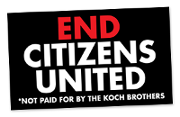Biblio
Filters: First Letter Of Last Name is R [Clear All Filters]
(1987). Advanced Unix Programming.
(1999). Breakthrough Inc. : High Growth Strategies for Entreneurial Organizations.
"Conversation is the most powerful peacetime business and organizational tool ever devised....While others stress the word communication, to us the word conversation is the better approach for two reasons. First, communication, as the word is normally used in everyday life, is usually one-sided. Second, conversation implies an exchange of views, or as Julio Olalla says, 'a changing together'. Third, communication focuses on the act of getting an already designed and known message out, while conversation implies two or more people jointly seeking some knowledge, truth, or strategy that they individually have not figured out entirely." (p. 153)
(2003). Breathing For A Living.
"A team is a team because of their spirit, not always because they play perfectly together all the time." (p. 189)
(1993). The Creative Spirit.
"'Love is not a word people talk about easily', says Larry Wilson, 'Yet, increasingly, we're seeing that people are wanting to know that somebody cares about them, that they are not just seen as some interchangeable part. Real leadership is about demonstrating that your intention is to care for people and support their growth.'" (p. 139)
(1986). Creativity in business.
"People who don't understand where creatively successful individuals get their confidence and risk-taking ability don't know what you know about the devastating VOJ (Voice of Judgement). Judgement creates fear and destroys confidence. Judgement shows any alternative to be fraught with risk. Judgement says no to experimentation, discovery, trail-blazing. Judgement says 'Stay right here and like it.'" (p. 56)
(1986). Cult of Information.
"The result [in Vonnegut's book Player Piano1] is a technocratic despotism wholly controlled by information technicians and corporate managers. The book raises the issue whether technology should be allowed to do all that it can do, especially when its powers extend to the crafts and skills which give purpose to people's lives. The machines are slaves, Vonnegut's rebellious engineer-hero insists. True, they make life easier in many ways; but they also compete with people. And 'anybody that competes with slaves becomes a slave.' As Vonnegut observes, 'Norbert Weiner, a mathematician, said all that way back in the nineteen-forties.'" (p. 11)
- 1. (1952). Player Piano.
(1994). The Customer Comes Second.
"Everybody has ideas, some better than others. But they live in people's minds. They need to be brought out, refined, tested, and implemented. Ideas are the lifeblood of a company. The weave the fabric of its future, but they're fragile.
"Ideas come to the curious—those who ask, "What would improve our lives?" But ideas have to be nurtured and cultivated. The stifling of ideas starts when we're young and told, "Just do it and don't ask why," or "That's just the way it is." Creativity and innovation aren't emphasized enough in our schools, homes, or professional lives, but people who seek these gifts can and will find them in the right environment." (p. 156)
"Ideas come to the curious—those who ask, "What would improve our lives?" But ideas have to be nurtured and cultivated. The stifling of ideas starts when we're young and told, "Just do it and don't ask why," or "That's just the way it is." Creativity and innovation aren't emphasized enough in our schools, homes, or professional lives, but people who seek these gifts can and will find them in the right environment." (p. 156)
(1998). Disconnected: How Six People from AT&T Discovered the New Meaning of Work in a Downsized Corporate America.
"Surely the old social contract, that basic exchange of loyalty for security, has been destroyed....
Some business theorists envision a new workplace that will accomodate both organizational flexibility and individual fulfillment. In their hopeful vision, companies will offer opportunities; employees will provide labor and talent. Workers will shuttle between projects and employers while organizations add and subtract staffers in a seamless ebb and flow.
Can we allow ourselves any such optimism? If the experiences of these six people are any indication, this process will be messy, and the concomitant dislocation severe. 'I must manage my own career' is indeed the brave new rallying cry of today's company man, but it must be tempered by one basic fact: Power, as ever, resides with the organization." (p. 200)
Some business theorists envision a new workplace that will accomodate both organizational flexibility and individual fulfillment. In their hopeful vision, companies will offer opportunities; employees will provide labor and talent. Workers will shuttle between projects and employers while organizations add and subtract staffers in a seamless ebb and flow.
Can we allow ourselves any such optimism? If the experiences of these six people are any indication, this process will be messy, and the concomitant dislocation severe. 'I must manage my own career' is indeed the brave new rallying cry of today's company man, but it must be tempered by one basic fact: Power, as ever, resides with the organization." (p. 200)
(2008). Dojo: The Definitive Guide.
(1991). Driving Fear Out of the Workplace: How to Overcome the Invisible Barriers to Quality, Productivity, and Innovation.
"W. Edwards Deming tells those who attend his seminars, 'We are here to make another kind of world.' He expresses the broad scope of the goal, and its enormity....
To achieve another kind of world requires a deep understanding of where we are now. The awareness of fear can help us move to this point. In the same way that many organizations have had to face harsh news about waste, scrap, and rework within their production processes, there is also harsh news about fear in human interactions in the workplace. But once past the denial that is so common, the real possibilities begin to emerge. When managers accept the role of facilitator, coach, and consultant, a dramatic shift takes place. Traditional notions of controlling and telling give way to inviting and guiding. Commitment switches to the long term—to the development of quality products and services, to long-lasting, mutually satisfying relationships with customers, vendors, and employees." (p. 240)
To achieve another kind of world requires a deep understanding of where we are now. The awareness of fear can help us move to this point. In the same way that many organizations have had to face harsh news about waste, scrap, and rework within their production processes, there is also harsh news about fear in human interactions in the workplace. But once past the denial that is so common, the real possibilities begin to emerge. When managers accept the role of facilitator, coach, and consultant, a dramatic shift takes place. Traditional notions of controlling and telling give way to inviting and guiding. Commitment switches to the long term—to the development of quality products and services, to long-lasting, mutually satisfying relationships with customers, vendors, and employees." (p. 240)
(1994). The End of Work: The Decline of the Global Labor Force and the Dawn of the Post-Market Era.
"NEARLY FIFTY YEARS AGO, at the dawn of the computer revolution, the philosopher and psychologist Herbert Marcuse made a prophetic observation—one that has come to haunt our society as we ponder the transition into the Information Age: Automation threatens to render possible the reversal of the relation between free time and working time; the possibility of working time becoming marginal and free time becoming full time. The result would be a radical transvaluation of values, and a mode of existence incompatible with the traditional culture. Advanced industrial society is in permanent mobilization against this possibility." (p. 221)
(1994). The Fifth Discipline Fieldbook.
"People stay with roles that frustrate them because of the dynamics of the structure. Something about their own lives, relationships, or position makes each person 'right' for the part he plays. It all seems so predetermined, yet the factors that create this may, individually, be quite inconsequential. People may even be drawn into the roles which clash with their personalities. Then, horrifyingly, their personalities may change over time to match the role they have been given." (p. 412)
(1991). How to Lead Work Teams: Facilitation Skills.
"Leaders will do well to think of a team as a collection of diverse individuals, each with his or her own unique character and potential for contribution to the group. Being expected to conform and to subjugate individual needs and desires for the common good is degrading to team members. The fact is that some people are more comfortable as part of a group than others. Some more independent members may feel constrained and ill at ease working in a team. Others, because of their race, sex, age, religion, or culture, may not have much in common with other members and yet feel pressured to get along and conform. An effective leader is sensitive to the need to preserve individual dignity, to capitalize on differences, and to not try to achieve conformity."
(1995). Idiot Letters.
(C)2014 CC-BY-NC 3.0, workcreatively.org











 ]
]